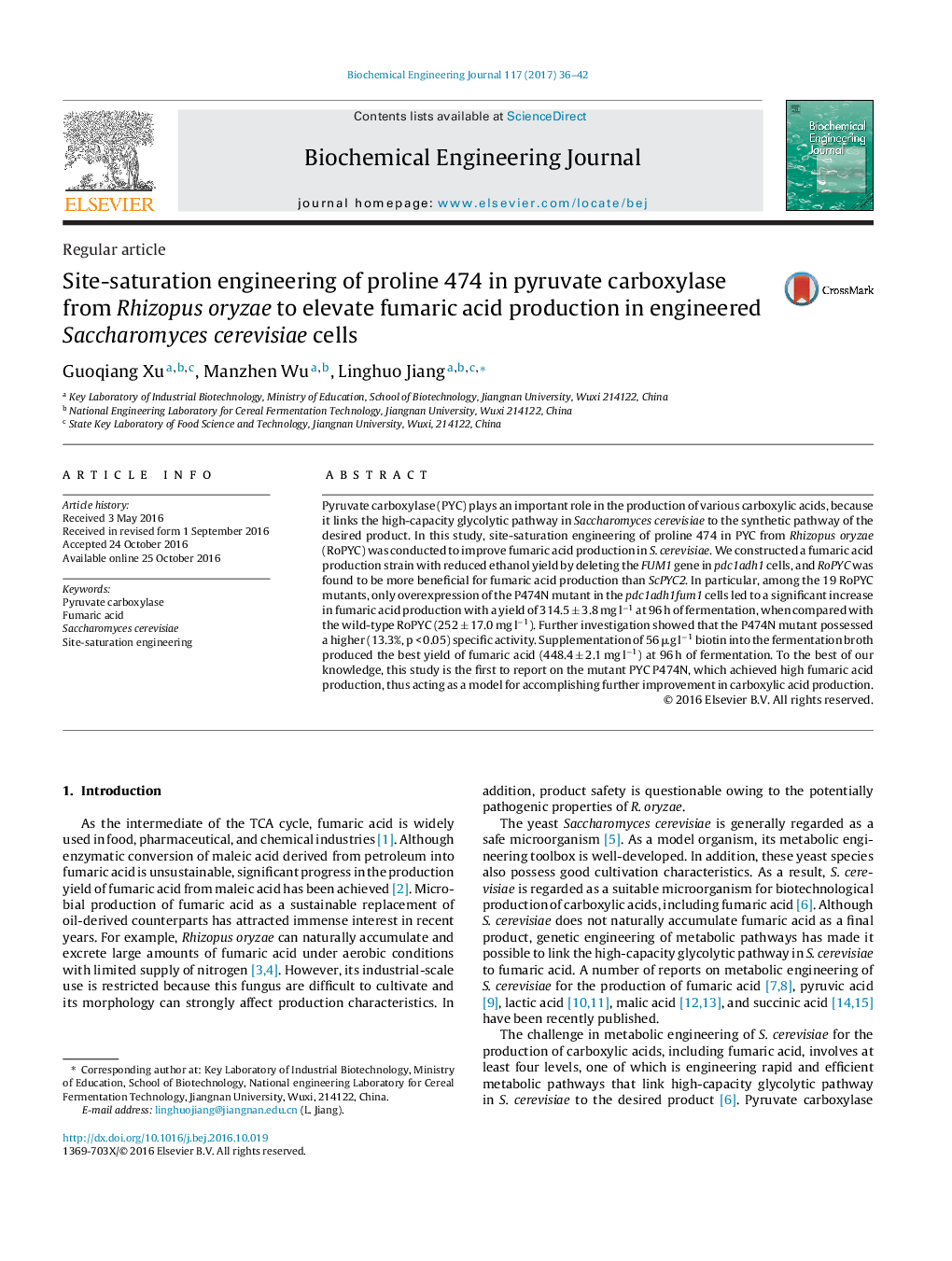| Article ID | Journal | Published Year | Pages | File Type |
|---|---|---|---|---|
| 6450434 | Biochemical Engineering Journal | 2017 | 7 Pages |
â¢The strain pdc1adh1fum1 can produce fumaric acid with low ethanol titer.â¢RoPYC was found to be more beneficial for fumaric acid production than ScPYC2.â¢The P474N mutant's overexpression led to a significant higher levels of fumaric acid.â¢Supplementation of 56 μg lâ1 biotin produced the best yield of fumaric acid.
Pyruvate carboxylase (PYC) plays an important role in the production of various carboxylic acids, because it links the high-capacity glycolytic pathway in Saccharomyces cerevisiae to the synthetic pathway of the desired product. In this study, site-saturation engineering of proline 474 in PYC from Rhizopus oryzae (RoPYC) was conducted to improve fumaric acid production in S. cerevisiae. We constructed a fumaric acid production strain with reduced ethanol yield by deleting the FUM1 gene in pdc1adh1 cells, and RoPYC was found to be more beneficial for fumaric acid production than ScPYC2. In particular, among the 19 RoPYC mutants, only overexpression of the P474N mutant in the pdc1adh1fum1 cells led to a significant increase in fumaric acid production with a yield of 314.5 ± 3.8 mg lâ1 at 96 h of fermentation, when compared with the wild-type RoPYC (252 ± 17.0 mg lâ1). Further investigation showed that the P474N mutant possessed a higher (13.3%, p < 0.05) specific activity. Supplementation of 56 μg lâ1 biotin into the fermentation broth produced the best yield of fumaric acid (448.4 ± 2.1 mg lâ1) at 96âh of fermentation. To the best of our knowledge, this study is the first to report on the mutant PYC P474N, which achieved high fumaric acid production, thus acting as a model for accomplishing further improvement in carboxylic acid production.
